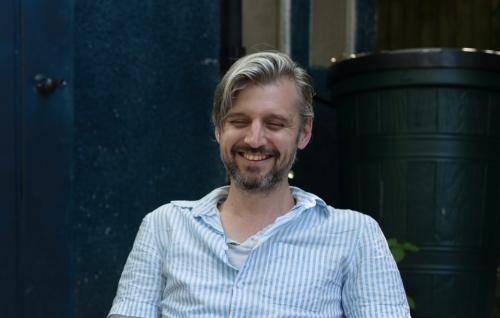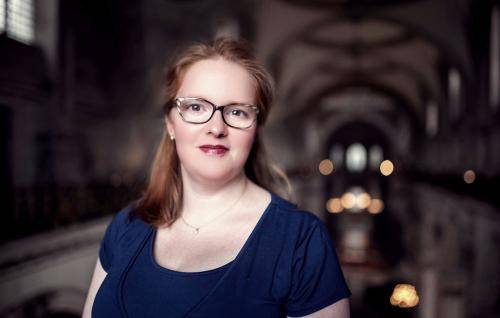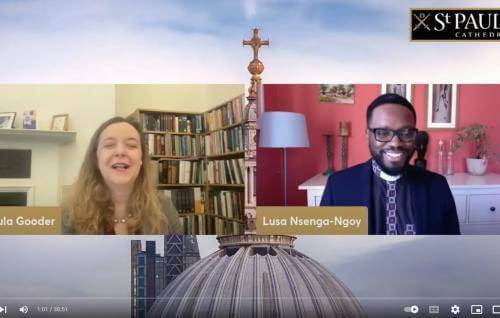Conversations with the Risen Christ
Conversations with the Risen Christ
Tessa Bosworth reflects on conversations with Christ for Easter.
1. Recognition: Mary Magdalene
The darkness of grief and mourning is a universal part of being human. Losing loved ones is something we will all experience at some point in our lives, and so, as we enter into the narrative of the Easter season, Mary Magdalene’s grief as she stands by the empty tomb holds space for all who have lost someone, all who are sad or lonely. Grief can affect a person in so many ways and can often manifest in physical symptoms, so, whilst we don’t really know why Mary couldn’t recognise Jesus (John 20.11-18), it is possible that her devastation simply meant that she couldn’t see straight.
Into the fog of her grief and confusion, Jesus speaks Mary’s name. That simple word was all it took to lift the veil from her eyes, to unblock her ears, to cast light into the gloom. And as Mary speaks his name back to him, what joy there must have been in that exchange! For Mary, the grief is washed away, and for Jesus, the pain of death is over, and the relief for them both must have been like fresh air in their lungs.
Recognition has restored relationship and released Mary from the grip of grief. Her blindness has gone, her eyes are now fully open. Open to the tangible reality of her friend standing in front of her, but also open to something of the significance of Jesus being alive again. And so, Jesus sends her to tell the other disciples that she has seen the Lord, releasing her to share the news of the risen Christ – the first evangelist of the Gospel.
May we know the relief that comes with recognising the resurrected Christ and be released to share that good news with the world.
2. Faith: St Thomas
While the other disciples had been together when they experienced the risen Jesus in their midst, Thomas was absent, perhaps hiding away to grieve alone. Despair tends to breed in isolation, and so I wonder if the doubting characteristic for which Thomas is famous was actually despair, a belief that things wouldn’t get better. So, hearing stories of extraordinary sightings weren’t enough – he could no longer believe in hope.
The gospel account [John 20:24-29] doesn’t offer any embellishment of the moment Jesus came and stood amongst the disciples this time. But we can be sure that they would have reacted with joy! Even those who had already seen him in his resurrected body would have rejoiced anew. Delight and awe fizzing around the room, cries of happiness and laughter, hearts clutched, mouths open. Was there even some playfulness in Jesus’ manner? Did he enjoy the looks on their faces as he appeared as if from nowhere?
Here was hope standing in their midst as a man resurrected yet still wounded. And it was these wounds which drew Thomas back to Jesus – the raw reality of humanity at one with the radiant holiness of divinity. By presenting his wounds to Thomas, Jesus was showing him that out of deep, doubting despair can come the relief of hope and faith. Christ’s body – wounded and resurrected – gave Thomas the gift of faith: the belief that the broken could be restored, the injured could be healed, the dead could be made alive. The wounds of God have become the source of Thomas’ hope, releasing in him renewed faith. ‘My Lord and my God!’
May we know the relief that comes with finding hope in the resurrected Christ and be released to put our faith in him anew.
3. Forgiveness: Simon Peter
As the disciples ate breakfast with Jesus on the shore of the sea, I wonder how large the elephant in the room loomed for Simon Peter, whilst the group sat enjoying the solace of Jesus’ return (John 21.15-19). What a burden Peter must have been carrying, unable to unspeak his rejection and denial of his dearest friend. The weight of those ‘if onlys’, layer upon layer of crushing regret and shame.
But now, the time had come. All the thoughts and feelings, hitherto unspoken, could at last be aired. Their precious friendship, now so fragile, needed healing and rebuilding. I wonder, did they walk away from the group along the shore? Did they sit side by side looking out to the horizon? Did they look each other square in the face? Perhaps we can take some time to explore how those scenarios play out in our own imaginations, as we allow the conversation to unfold.
Jesus, in his deep kindness, speaks straight to the heart of things. As he addresses Peter once, then again and then again, he heals the three-fold wound of denial with words of freedom and confidence. He gives Peter the opportunity to choose differently this time, to choose love over fear, connection over rejection. And Peter’s burden is finally relieved – he is forgiven.
More than just being relieved of the guilt he has been carrying, Peter is now released to care for the ‘sheep’ Jesus entrusts to him. The weight of guilt over him is replaced by the Church’s foundation rock beneath him, the establishment of a community of disciples which would remain throughout history. Jesus restores Peter with forgiveness and guides him into his calling.
May we know the relief that comes with the forgiveness of the resurrected Christ and be released to brings our gifts to his Church.
4. Expectation: Cleopas and companion
A walk with a friend can be an immensely beneficial way to work through life issues together, and so it was for Cleopas and his companion (Luke 24:13-25). Indeed, their concerns were so great that the conversation had become quite heated, according to the original wording in the text, so they may well have been debating the veracity of the stories they’d heard from their disciple friends about what had happened to Jesus.
As he falls into step with the pair and asks them what they are discussing, however, they stop walking altogether and look sad. The argument is halted, and recent events become real all over again as they recount them to this seeming stranger. The sense of dashed expectations – ‘but we had hoped’ – can stop any of us in our tracks. Feelings of deep disappointment and promises unmet are still as familiar to us today, so perhaps we find ourselves alongside them on that road, too.
But Jesus reminds them of the bigger picture, of the promises of God and the story of salvation, and they are eager to hear more of his words of hope, of renewed expectations for the future. The culmination of the encounter takes place in their home, when their eyes are opened at the breaking of bread. They find relief from their disappointment through the very fact of his presence with them and are released from the old expectations they held. Jesus offers them, and us, something new — that in all situations he is our constant companion. The risen Christ’s body opens our eyes to God’s presence in the world, both in the sharing of the sacrament at the altar and in the everyday-ness of our lives together.
May we know relief from disappointment and release into renewed expectations in the saving presence of God.








